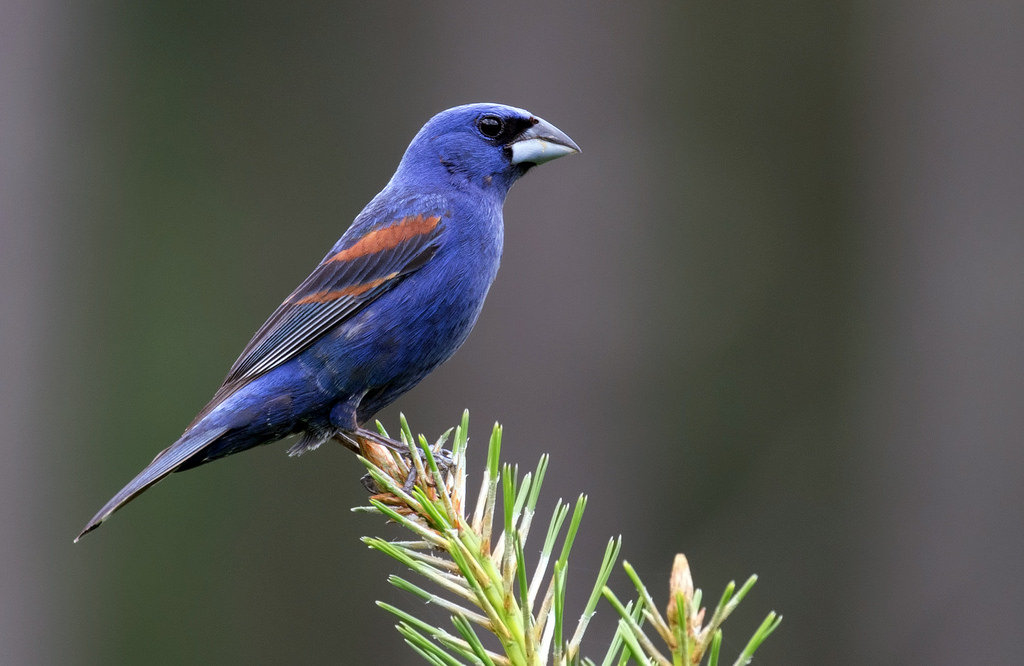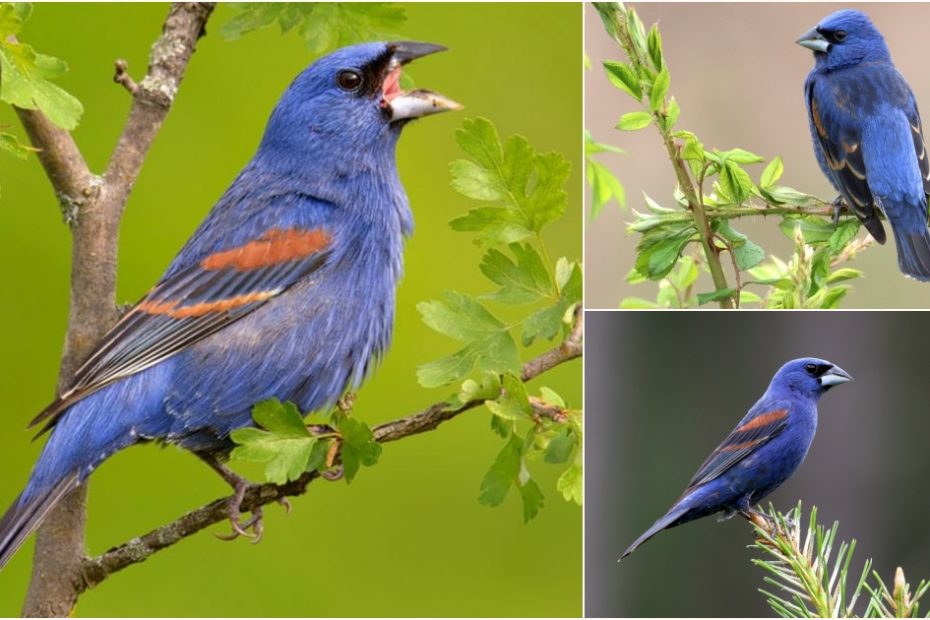
In the vast expanses of North America’s wilderness, amidst the rustling leaves and melodious birdcalls, one species stands out as a symbol of resilience and adaptability: the Blue Grosbeak (Passerina caerulea). With its striking blue plumage and melodious songs, the Blue Grosbeak not only captivates the hearts of birdwatchers but also holds a significant ecological importance in its habitat.

Found predominantly in grasslands, open woodlands, and brushy areas across the southern United States and parts of Mexico, the Blue Grosbeak has adapted to diverse environmental conditions. Its ability to thrive in various habitats showcases its resilience in the face of changing landscapes and human encroachment.

One of the most striking features of the Blue Grosbeak is its vibrant blue coloration, particularly prominent in males during the breeding season. The contrast between the male’s deep blue plumage and rusty-brown wings creates a stunning sight against the backdrop of green foliage. Females, although less colorful, exhibit a subtle beauty with their brownish-blue tones, blending seamlessly into their surroundings to protect their nests.
Apart from its visual allure, the Blue Grosbeak is also known for its melodious songs, which resonate throughout its habitat during the breeding season. These complex vocalizations serve multiple purposes, including attracting mates and defending territories. Such behaviors highlight the species’ evolutionary adaptations for communication and social interaction within its community.
Despite its resilience, the Blue Grosbeak faces numerous threats in the wild. Habitat loss due to agricultural expansion, urban development, and deforestation poses a significant challenge to its survival. Additionally, factors like pesticide use, climate change, and predation further exacerbate the species’ vulnerability.
Conservation efforts play a crucial role in safeguarding the future of the Blue Grosbeak. Initiatives aimed at habitat restoration, land protection, and raising public awareness about the species’ importance are essential steps towards ensuring its long-term survival. By preserving the ecosystems on which the Blue Grosbeak depends, we not only protect a charismatic bird species but also safeguard the biodiversity of the wilderness as a whole.


In conclusion, the Blue Grosbeak serves as a poignant symbol of resilience in the face of adversity. Its ability to adapt to changing environments and its enduring beauty remind us of the inherent value of wildlife in the natural world. By working together to conserve and protect species like the Blue Grosbeak, we uphold our responsibility to steward the Earth’s precious biodiversity for generations to come.




